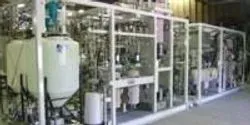Chemicals

Now that we have your attention, we have to dash your hopes. This is not a column about Vegas and “what happens in Vegas, stays in Vegas” kind of fun. It is going to provide vital safety information on one of the most widely used laboratory solvents. The title is derived from what is probably the best-known common use of the term outside laboratories— i.e., a chemical stripper or stripping agent.

A problem that has gone relatively unnoticed when achieving reliable measurements is that of transpiration. Transpiration is defined as the passage of vapor from within a container to the outside. Transpiration is a systematic error that increases the concentration of a solution as time passes.

No matter what field you serve, your role as a modern laboratory manager requires an intimate understanding of how safety, productivity, and sustainability work together to determine the success of your entire operation in achieving accurate results and containing costs. It’s no surprise that one of the biggest challenges of running a successful lab operation is meeting all these expectations without sacrificing any one of them.

Geoffrey Bartholomeusz, PhD, associate professor in the Department of Experimental Therapeutics and director of the siRNA Core Facility at the University of Texas MD Anderson Cancer Center, talks to contributing editor Tanuja Koppal, PhD, about why there is a growing interest in replacing some 2D cell culture applications with 3D cell cultures. He talks about where and why he uses 3D-based cell cultures in his lab and what lab managers should take into consideration before making the investment in this innovative technology.

















